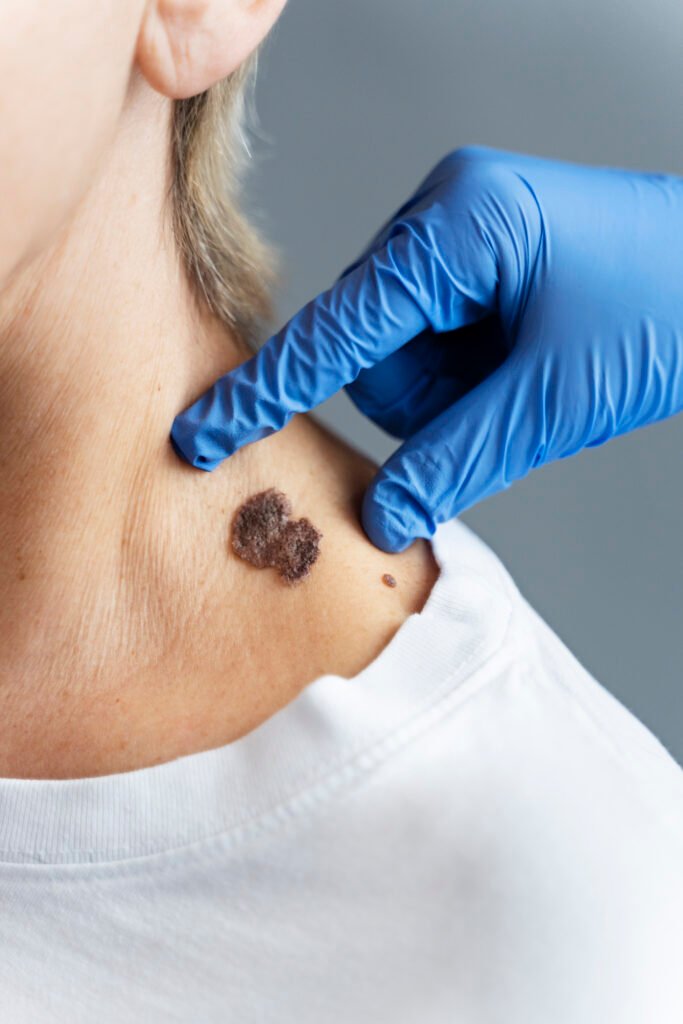Mole, wart, and skin tag removal is a procedure that many patients consider for aesthetic reasons, or to eliminate potential health risks. These growths on the skin, while generally benign, may cause discomfort, irritation, or emotional distress. As a dental surgeon, I am trained in various minor surgical techniques, which are also applicable to the removal of these skin growths. Below is a detailed guide about mole, wart, and skin tag removal.
What are Moles, Warts, and Skin Tags?
- Moles: These are small, dark skin growths that can appear anywhere on the body. They are usually brown or black but can vary in color.
- Warts: Caused by the human papillomavirus (HPV), warts are typically rough, raised bumps on the skin.
- Skin Tags: These are small, soft, benign growths of skin that usually appear on areas where the skin rubs against itself, such as the neck, armpits, or eyelids.
Reasons for Removal
- Aesthetic reasons: Many patients choose removal because they are bothered by the appearance of these growths on visible areas like the face, neck, or hands.
- Irritation: Skin tags, especially, may cause irritation if they rub against clothing or jewelry.
- Health concerns: In rare cases, moles or warts may develop into skin cancer, especially if they change in size, shape, or color.
- Hygiene: Certain skin tags or warts in areas where there is frequent friction can become prone to infection.
Types of Removal Procedures
- Excision: This is the surgical removal of the mole, wart, or skin tag using a scalpel. It is typically done under local anesthesia, ensuring that the procedure is painless.
- Cryotherapy: For warts, freezing them with liquid nitrogen is a common method. The extreme cold destroys the tissue, causing the wart to fall off.
- Laser Removal: This technique uses focused light beams to remove the growth, often without the need for a scalpel. It’s minimally invasive and leaves little scarring.
- Electrosurgery: This procedure uses high-frequency electrical currents to burn off skin tags and other growths.
- Shave Excision: This involves shaving off the growth with a sharp tool, typically used for moles and skin tags that are raised from the skin.
Benefits of Mole/Wart/Tag Removal
- Improved appearance: Removal can significantly enhance the appearance of the skin, especially if the growth is located on the face or other visible areas.
- Reduced irritation: Skin tags can cause friction and discomfort, especially in areas like the neck or underarms. Removal provides relief.
- Prevention of further health issues: If a mole or wart is suspected to be cancerous or precancerous, removal is essential for preventing further health risks.
- Boost in confidence: Many individuals feel self-conscious about visible skin growths. Removal can restore confidence and improve one’s self-esteem.
What to Expect During the Procedure
- Consultation: The first step is a consultation where the dentist or surgeon evaluates the growth. They will ask about the history of the mole, wart, or skin tag and may perform a biopsy if needed.
- Anesthesia: Most procedures are performed with local anesthesia, meaning you will be awake but will not feel any pain during the process.
- The Procedure: Depending on the method chosen (excision, cryotherapy, laser, etc.), the growth will be removed in a quick, minimally invasive manner.
- Recovery: Recovery times vary depending on the method used. Shave excisions and cryotherapy generally require minimal downtime, while excisions may take a few days to heal completely.
Post-Procedure Care
- Follow-up: After removal, follow-up appointments may be necessary to ensure proper healing and to monitor for any recurrence.
- Wound Care: Keep the area clean and dry. Apply any prescribed ointments to promote healing and prevent infection.
- Avoid Scratching or Rubbing: Refrain from touching or scratching the treated area to avoid irritating the wound.
- Sun Protection: Protect the treated area from the sun, as it can cause pigmentation changes in the healing skin.
Frequently Asked Questions
- Is the procedure painful?
No, the procedure is typically painless as local anesthesia is used. You may feel some pressure or a slight sensation during the procedure. - How long does the removal take?
The removal itself usually takes just a few minutes, depending on the size and location of the growth. Recovery time may vary. - Will the mole, wart, or skin tag grow back?
While the majority of moles, warts, and skin tags are permanently removed, in some cases, they may recur. Follow-up care is essential to ensure complete removal. - Is there any scarring after removal?
There may be some minimal scarring, especially with excision. However, most people experience minimal scarring, which fades over time. - Are there any risks?
Like any minor surgery, there are small risks of infection, scarring, or changes in pigmentation. These are rare and can be minimized with proper aftercare.

